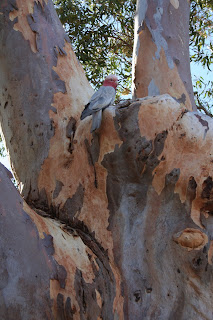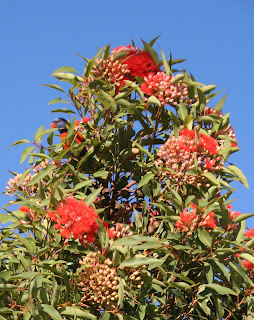THE US secretary of the interior has been called on to protect, both at home and abroad, tropical parrots most prized by unscrupulous pet traders.
"Listing these birds under the US Endangered Species Act," director of Denver University's environmental law clinic Jay Tutchton said in a January 21 release, "will head off poachers and collectors, increase funding and attention for research and habitat protection, and draw scrutiny to projects proposed by US government and lending agencies worldwide."
Named in a petition drafted by the university's students are:
• Hyacinth, Blue-throated, Blue-headed, Green, Scarlet and Military macaws;
• Grey-cheeked parakeets; and
• Yellow-billed, Red-crowned, Thick-billed, and Crimson shining parrots.
Also nominated were Philippine, White, and Yellow-crested cockatoos (which resemble the
Sulphur-crested ones we get in Australia).
Lee Hall, who's legal eagle for fur and feather activists Friends of Animals, was also concerned.
"The pet trade threatens the continued survival, as well as the freedom, of these birds – beings who must also cope on habitat desired by ranchers and energy developers," Hall said. "The US market for these birds must be closed."
Notwithstanding the Convention on International Trade in Endangered Species, and similarly-minded US law, traders can obtain many of these birds with permits, the release warned. Trappers may set snares on perches, use ladders to raid nests, set the bases of trees afire to flush birds out, and shoot adult birds in the wing to allow capture.
Chicks are especially prized, the release continued. Collectors will even cut down trees to get to them – killing 60 per cent of the chicks as the trees fall, and depriving birds of future nesting sites. Most surviving birds die in transit between traders.
Said Kay Bond, the attorney supervising the law students drafting and preparing to litigate the petition: "We expect a positive initial finding on our petition within 90 days, and we hope the secretary will act before one or more of these communities of birds go [sic] extinct due to the pet trade."
Where the parrots live:
• Yellow-billed parrots in the wet limestone forests of Jamaica.
• Red-crowned parrots along the northeast Mexican coasts, a population in Veracruz having disappeared.
• Thick-billed parrots once lived in the southwestern US but are now seen only in Mexico.
• Military macaws in fragmented canyon and forest habitat from Mexico to Peru, having disappeared from Argentina.
• Blue-throated macaws in Bolivian palm groves
• Grey-cheeked parakeets in coastal areas along the border between Ecuador and Peru
• Hyacinth macaws (not to be confused with Jim Morrison's
Hyacinth House) on the edges of Brazilian palm forests
• Blue-headed macaws in parts of Brazil, Peru, and Bolivia.
• Scarlet Macaws in pockets throughout Central and South America; only about every two years do they lay two to four eggs.
• Great green macaws, once widespread throughout Central and South America, are now only found in pockets of Colombia, Costa Rica, Ecuador, Honduras, Nicaragua and Panama. Less than 2500 free-living Great Green macaws are left. In Costa Rica, only 25-35 pairs remain. In Ecuador, they number less than 100 individuals. They've been seen bagged for sale in Nicaraguan markets.
• Crimson shining parrots in forests and agricultural lands, as well as around human habitation on the islands of Fiji.
• Yellow-crested and White cockatoos live in Indonesia, where they are suffering the effects of the pet trade and habitat destruction.
• Philippine cockatoos are currently found on only a handful of islands within their historic range.
Labels: Macaw, Scarlet macaw




















